
For months, President Vladimir Putin denied that he would invade Ukraine, but then he ripped up a peace pact and launched "Putin's war," sending troops into the country's north, east, and south.
As the death toll rises, Russia's president is accused having shattered European peace. What happens next might put the continent's whole security system at jeopardy.
/cdn.vox-cdn.com/uploads/chorus_asset/file/23073411/AP21337620588416.jpg)
Why have Russian troops attacked?
In a pre-dawn TV address on 24 February, President Putin declared Russia could not feel "safe, develop and exist" because of what he claimed was a constant threat from modern Ukraine.
Immediately, airports and military headquarters were attacked, then tanks and troops rolled in from Russia, Russian-annexed Crimea and its ally Belarus. Now, warplanes have bombed major cities.
Russia refuses to use the terms war or even invasion; many of its leader's justifications for it were false or irrational.
He claimed his goal was to protect people subjected to bullying and genocide and aim for the "demilitarisation and de-Nazification" of Ukraine. There has been no genocide in Ukraine: it is a vibrant democracy, led by a president who is Jewish.
"How could I be a Nazi?" said Volodymyr Zelensky, who likened Russia's onslaught to Nazi Germany's invasion in World War Two. Ukraine's chief rabbi and the Auschwitz Memorial have also rejected Russia's slur.
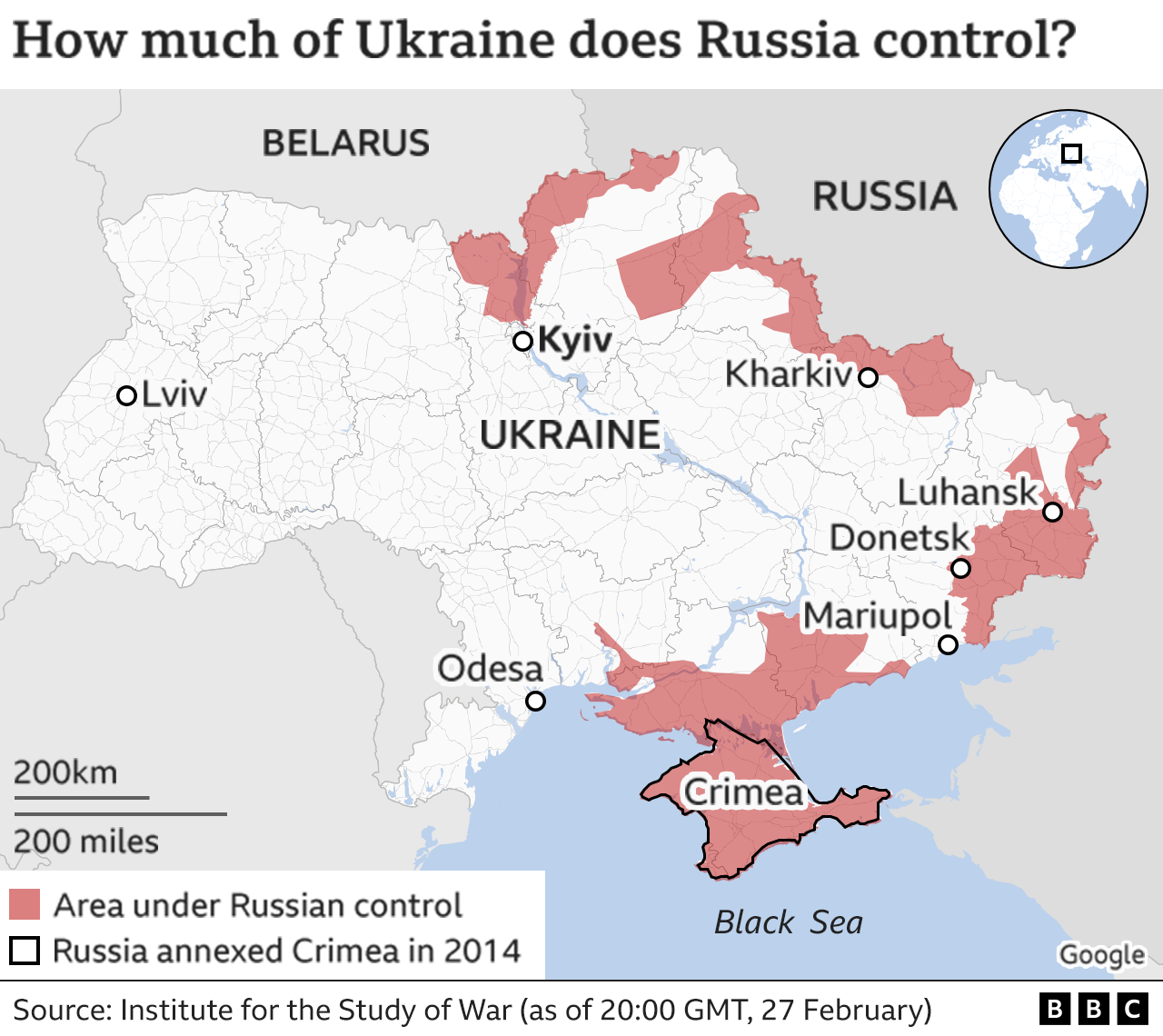
President Putin has frequently accused Ukraine of being taken over by extremists, ever since its pro-Russian president, Viktor Yanukovych, was ousted in 2014 after months of protests against his rule.
Russia then retaliated by seizing the southern region of Crimea and triggering a rebellion in the east, backing separatists who have fought Ukrainian forces in a war that has claimed 14,000 lives.
Late in 2021, Russia began deploying big numbers of troops close to Ukraine's borders, while repeatedly denying it was going to attack. Then Mr Putin scrapped a 2015 peace deal for the east and recognised areas under rebel control as independent.
Russia has long resisted Ukraine's move towards the European Union and the West's defensive military alliance, Nato. Announcing Russia's invasion, he accused Nato of threatening "our historic future as a nation".
How far will Russia go?
It is now clear Russia is seeking to seize the big cities and overthrow Ukraine's democratically elected government. President Zelensky said he had been warned "the enemy has designated me as target number one; my family is target number two".
Russia's stated aim is that Ukraine be freed from oppression and "cleansed of the Nazis". Under this false narrative of a Ukraine run by fascists since 2014, Mr Putin has spoken of bringing to court "those who committed numerous bloody crimes against civilians".
His long-term ambitions for Ukraine are unknown. He denies seeking to occupy Ukraine and rejected a UK accusation in January that he was plotting to install a pro-Kremlin puppet. One unconfirmed intelligence report says he aims to split the country in two.
He faces stiff resistance from a deeply hostile population, but he has shown he is prepared to bomb civilian areas to fulfil his goals.
There is no immediate threat to Russia's Baltic neighbours, but Nato has bolstered their defences just in case.
Ahead of the invasion, Russia's public focus was always on the areas held by Russian-backed rebels in the east. But that changed when President Putin recognised their independence.
Not only did he make clear he saw them as no longer part of Ukraine, he revealed he backed their claims to far more Ukrainian territory. The self-styled people's republics cover little more than a third of the regions of Donetsk of Luhansk and the rebels covet the rest, too.
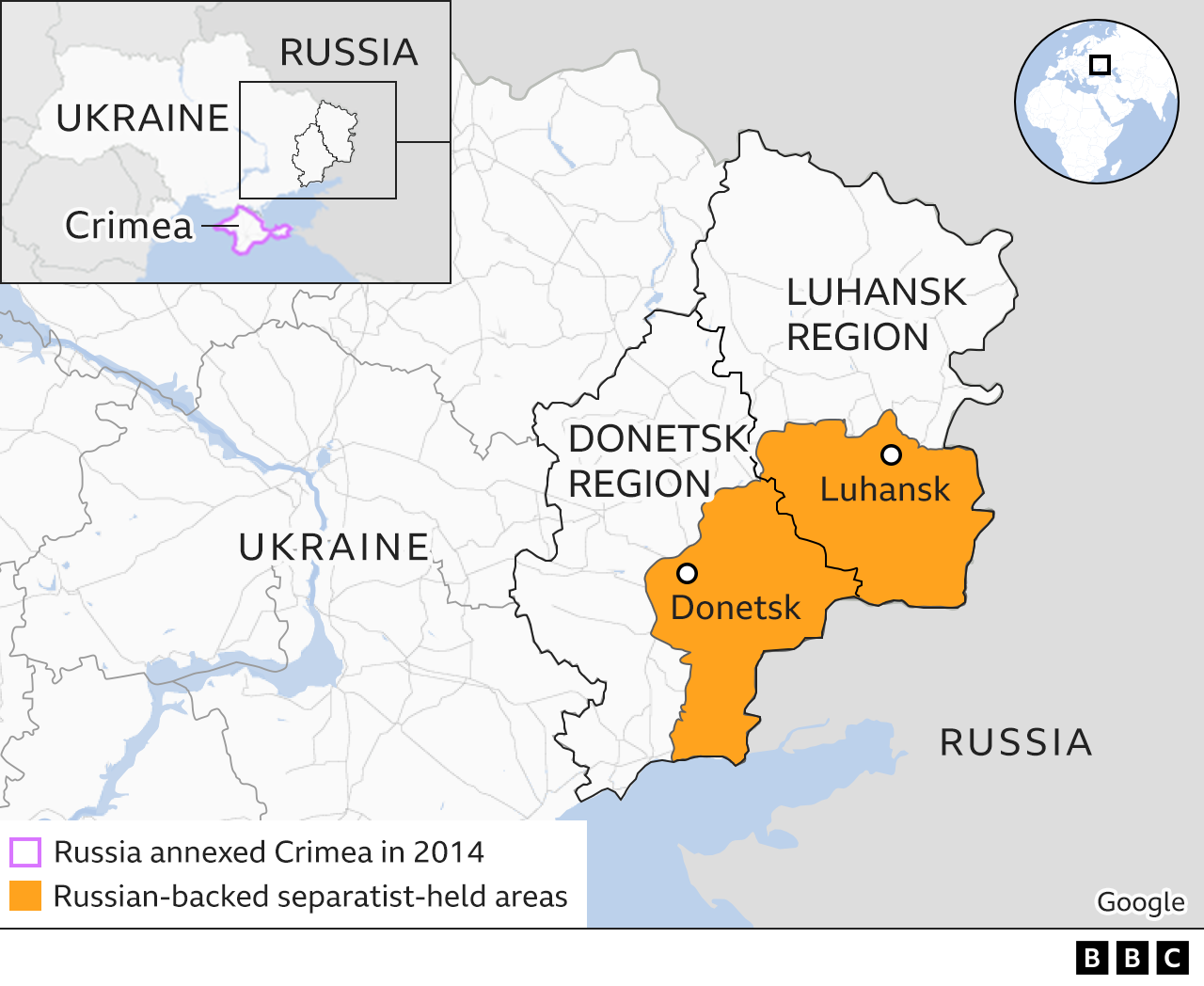
How dangerous is this invasion for Europe?
These are terrifying times for Ukrainians as bombs rain down on cities and civilians rush to Cold War-era bomb shelters.
Hundreds have died already in what German Chancellor Olaf Scholz has dubbed "Putin's war" - civilians as well as soldiers. Russia's onslaught has prompted hundreds of thousands of people to flee across Ukraine's borders. Poland, Hungary, Romania, Moldova and Slovakia are seeing a big influx, while the EU suggests more than seven million people could be displaced.
Russia's leader has even put his nuclear forces on high alert, days after threatening the West with "consequences the like of which you have never seen" if it stands in his way.
Such scenes are horrifying for the entire continent, witnessing a major power invading a European neighbour for the first time in decades. Recalling the Cold War, Volodymyr Zelensky spoke of Ukraine battling to avoid a new iron curtain closing Russia off from the civilised world.
For Europe's leaders, this invasion has brought some of the darkest hours since World War Two. France's Emmanuel Macron has spoken of a turning point in Europe's history, while Germany's Olaf Scholz has warned that "Putin wants a Russian empire".
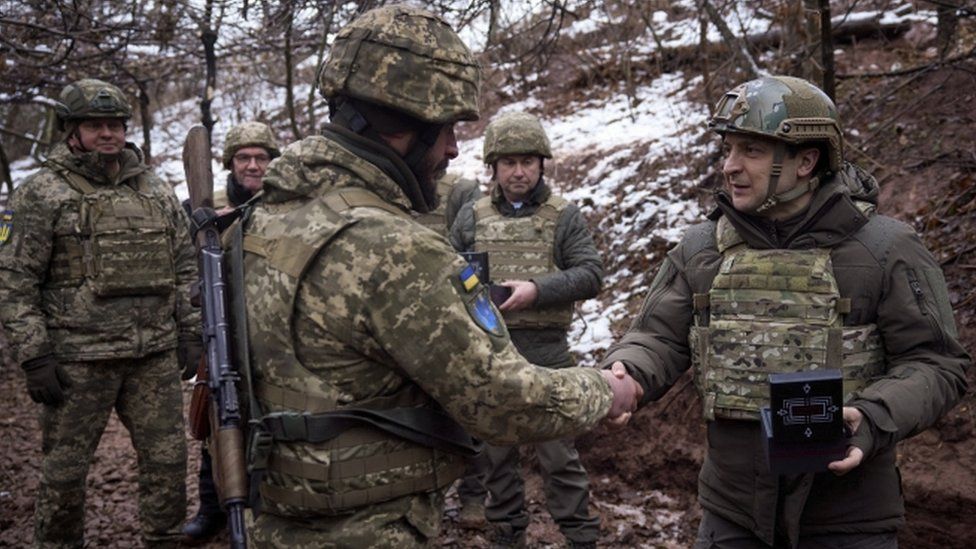
For the families of both armed forces, these are anxious days. Ukrainians have already suffered a gruelling eight-year war with Russian proxies. The military has called up all reservists aged 18 to 60 years old.
This is not a war Russia's population was prepared for, either, as the invasion was rubber-stamped by a largely unrepresentative upper house of parliament. Thousands of anti-war protesters have been detained in a state whose main opposition leader was already behind bars.
What can the West do?
Nato's defensive alliance has made clear there are no plans to send combat troops to Ukraine itself. But member countries have provided weapons and field hospitals and the EU, for the first time in its history, is to buy and send arms and other equipment.
Nato has deployed several thousand troops in the Baltic states and Poland and for the first time is activating part of its much larger rapid reaction force. Nato will not say where but some could go to Romania, Bulgaria, Hungary and Slovakia.
At the same time, the West is targeting Russia's economy, financial institutions and individuals:
- The EU, US, UK, Japan and Canada are cutting off key Russian banks from the international Swift payment network, which allows the smooth and rapid transfer of money across borders
- The EU, UK and Canada have shut off their airspace to Russian airlines
- Personal sanctions are being imposed on President Putin and Foreign Minister Sergei Lavrov by the US, EU and UK, while 351 Russian MPs are being targeted by the EU
- Germany has halted approval on Russia's Nord Stream 2 gas pipeline, a major investment by both Russia and European companies
- Russia's state-run media Sputnik and Russia Today, seen as a Kremlin mouthpiece, are being banned across the EU
- The Russian city of St Petersburg will no longer be able to host this year's Champions League final and the Russian Grand Prix will not take place in Sochi.
Putin's war prompts dramatic German U-turn
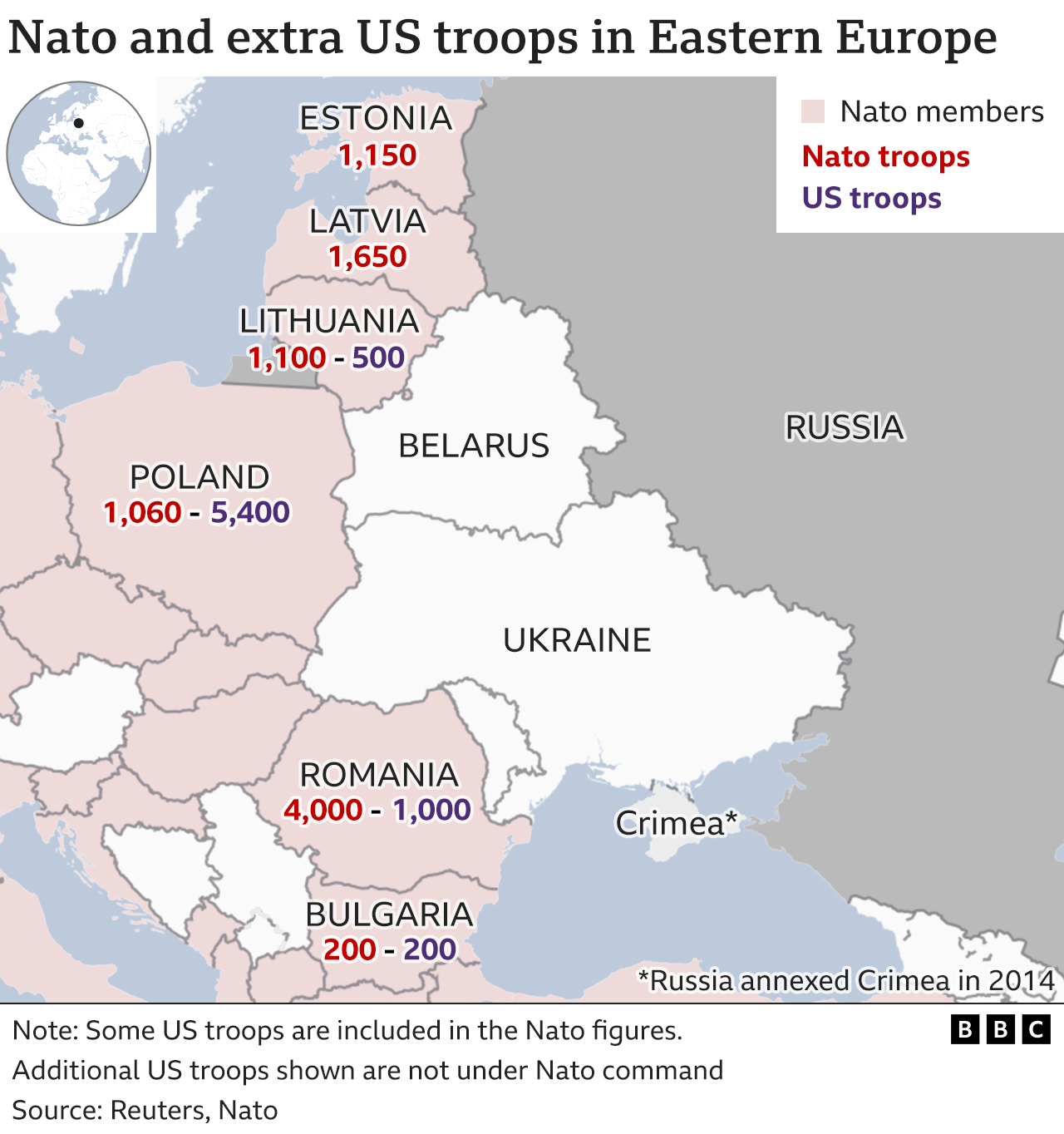
![]()
What does Putin want?
He has not only demanded that Ukraine never join Nato but that the alliance turns the clock back to 1997 and reverses its eastward expansion. He has complained Russia has "nowhere further to retreat to - do they think we'll just sit idly by?".
He wants Nato to remove its forces and military infrastructure from member states that joined the alliance from 1997 and not to deploy "strike weapons near Russia's borders". That means Central Europe, Eastern Europe and the Baltics.
But this goes beyond Nato. In the words of Germany's chancellor, Russia's leader "wants to take over Europe according to his world view".
Last year, President Putin wrote a long piece describing Russians and Ukrainians as "one nation", and he has described the collapse of the Soviet Union in December 1991 as the "disintegration of historical Russia".
He has claimed modern Ukraine was entirely created by communist Russia and is now a puppet state, controlled by the West. It was his pressure on Ukraine not to sign an association treaty with the EU in 2013 that sparked the protests that ousted its pro-Kremlin president.
In President Putin's eyes, the West promised back in 1990 that Nato would expand "not an inch to the east", but did so anyway.
That was before the collapse of the Soviet Union, however, so the promise made to then Soviet President Mikhail Gorbachev only referred to East Germany in the context of a reunified Germany. Mr Gorbachev said later "the topic of Nato expansion was never discussed" at the time.
What has Nato said?
Nato is a defensive alliance with an open-door policy to new members, and its 30 member states are adamant that will not change.
Ukraine's president wants a clear timeline, but there is no prospect of Ukraine joining for a long time, as Germany's chancellor has made clear.
The idea that any current Nato country would give up its membership is a non-starter.
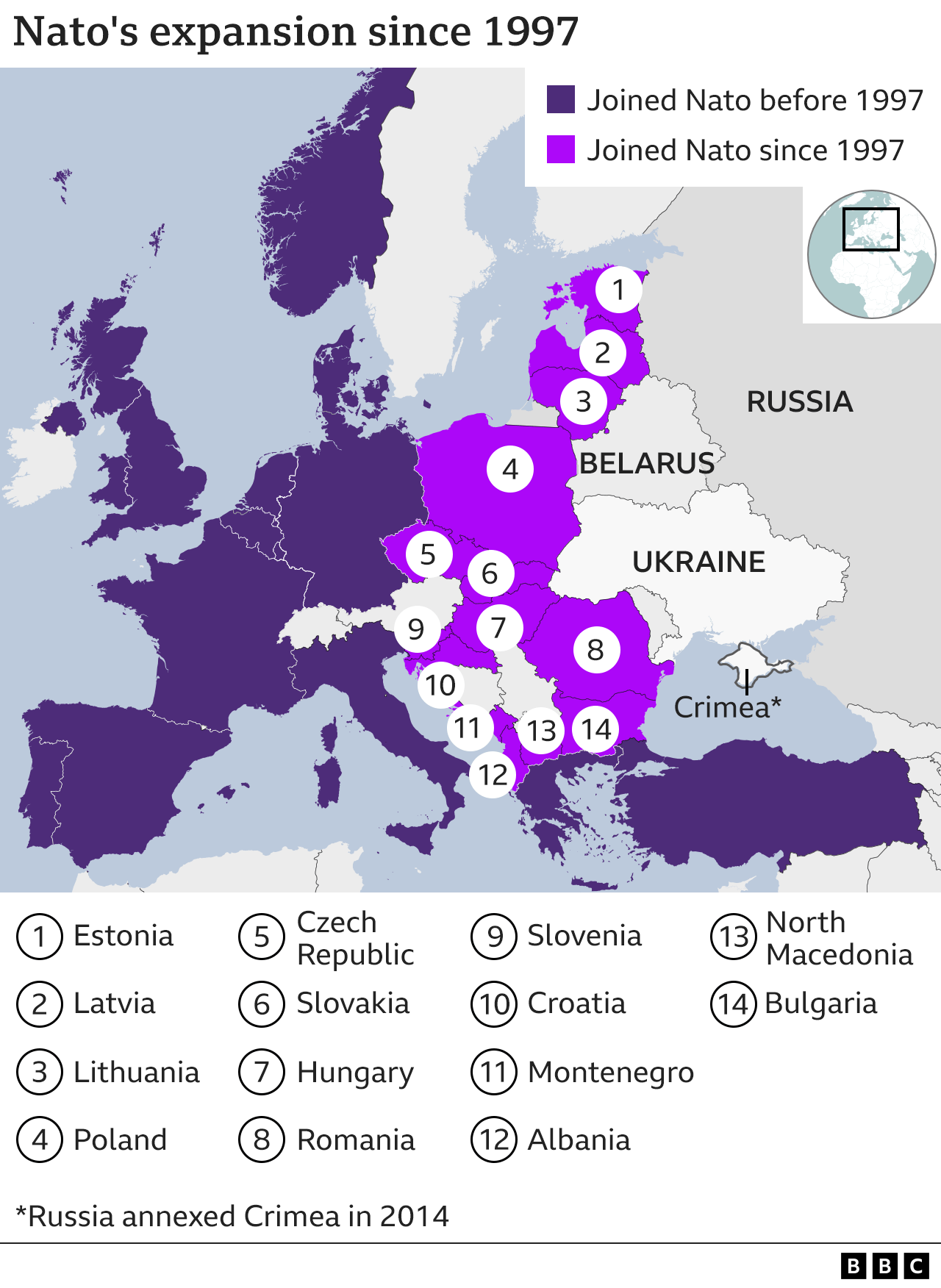
Is there a diplomatic way out?
There seems very little chance for the moment, even if the two sides have held talks on the border with Belarus.
Russia insists Kyiv lays down its arms and demilitarises, and that will not happen.
Beyond the war, any eventual deal would have to cover the status of eastern Ukraine as wells as arms control with the West.
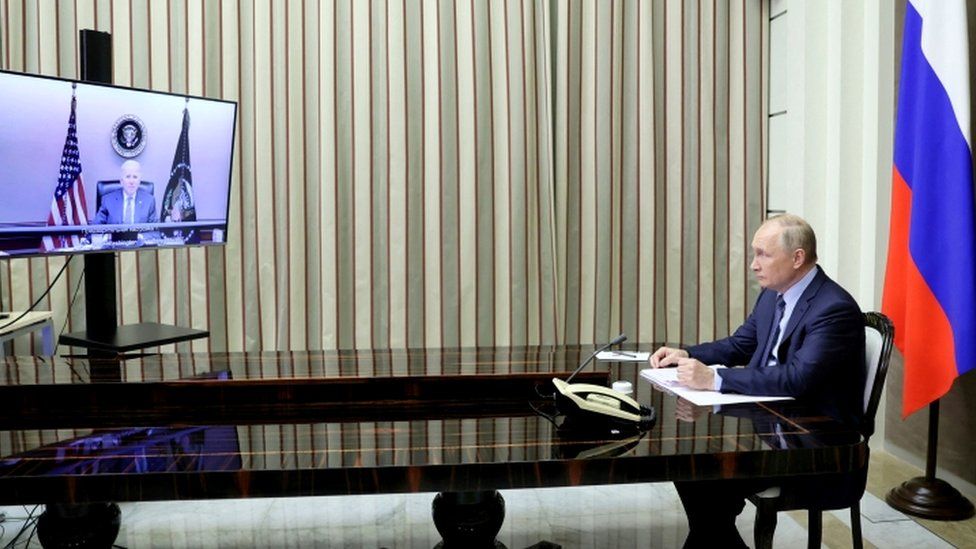










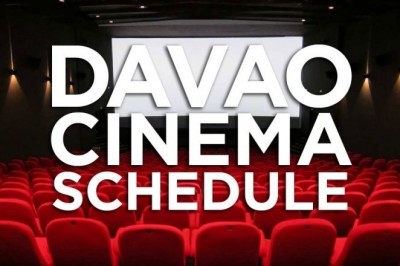










Facebook Conversations